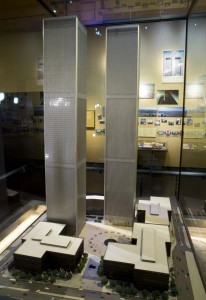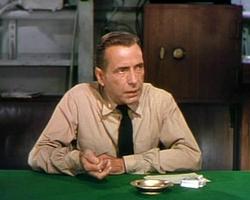
When John Winthrop was setting sail for America, he delivered a lay sermon which would become a foundational text for the American Civil Religion. Drawing on the Book of Matthew, he spoke of a “city on a hill” that the eyes of the world would be upon.
There is a longstanding idolizing of the city in human culture. This exaltation derives from ancient Mesopotamia, the first builders of major cities. The famous Epic of Gilgamesh, begins with a paean to the walls of the city he ruled. At the end of epic, with Gilgamesh’s adventures completed and his quest for immortality over, he returns to those same city walls with the insight that while the body is not immortal, the walls of the city are. In this ancient epic, when Gilgamesh clicks his heels three times and realizes there is no place like home, it is to the city to which he returns.
America has had an ambivalent relationship with cities. When Thomas Cole launched what would become the Hudson River School, America’s first national art form, he lived in New York, he painted in New York, and he conducted business in New York, but he didn’t paint the city of New York. Part of the appeal of the Hudson River School was that America – which had no aqueducts, cathedrals, monasteries, or palaces – was closer to the world God created than Europe. When Cole wanted to show its degradation in the course of time he painted the ruin of walls Gilgamesh would have admired. Eventually Cole would move to Catskill where his home is now a privately-run National Historic Site across the river from the New York State operated Olana of his former student Frederic Church.
The dichotomy between the city and the natural world continues on in the memberships of the historical society and friends group devoted to the two sites. The groups contain lots of New York city residents, including those who may have a second home in Greene or Columbia counties (among the legions of city residents who depart for the country each summer).
This dichotomy was expressed in the biblical texts that have been so important to America. For every Nimrod who was a builder of cities in ancient Mesopotamia there was a Tower of Babel signifying the hubris of buildings that sought to scrape the sky and touch the heavens. For every Pharaoh who was a builder there was an exodus to free the people from forced labor. For every king who was a builder, there was a prophet to lead the charge against him.
For many Americans, cities have had a bad image and left a poor taste in their mouths, sometimes quite literally. Then Americans, especially in New York began to build great towers that scraped the sky: the Woolworth Building, the Chrysler Building, the Empire State Building, and eventually the twin towers of the World Trade Center. The cities, so maligned in the circuit Chautauquas of the early 20h century, became melting pots for the new America being built by millions of immigrants. Now new structures called ball parks and stadiums graced the country’s metropolises along with giant theaters. New York had become the crossroads of the universe at Times Square, the cosmic center with the Saul Steinberg New Yorker cover, the island at the center of the world, home to the United Nations. In Working Girl, when Melanie Griffith ferried daily to work from Staten Island to Manhattan to the sound of Carly Simon’s song blessing the new Jerusalem, New York had become the city on a hill, the true field where dreams come true.
During this time of construction, one building over all others attained mythic proportions and secured a place in the hearts of Americans: the Empire State Building. Shortly after its completion, a story which became part of American mythology was created. It was the story of the larger-than-life king who climbs the building the scrapes the sky in hopes of consummating the sacred marriage while defeating the forces of chaos which seek to destroy him. In this American mythic retelling however the king dies.
The story of King Kong exactly reverses the ancient Mesopotamian tradition while containing the identical story elements. When Nebuchadnezzar I became king of the universe at Babylon, he built a ziggurat, the ancient temple skyscraper. He commissioned a story called Enuma Elish, “When on high,” a creation story which told of the king’s triumph over the forces of chaos and the establishment of the cosmic order in the beginning. This story was part of the New Year’s festival which also included processions and a sacred marriage between the king and the high priestess signifying the abundant fertility of the coming year.
In the American version, the telling is a little different. The king is from the South Pacific islands. The king is the primitive one, signifying the forces of chaos, and the foe overcome by the hero. In our myth, the forces arrayed against him represent science, reason, and the new order of an advanced civilization, the traditional role of the king. And of course, the sacred marriage is never consummated. Everything is reversed. The story of the high place in the city at the cosmic center assumes a drastically different perspective in the American version – it doesn’t belong to the king, it belongs to the people.
There was no story associated with the World Trade Center. Despite the remake of King Kong and the tightrope walking between the two towers, they remained an unloved set of buildings with no story to tell. The towers were not part of the American mythic tradition. They did not represent the city on a hill. They did not signify that America was the cosmic center. They had no symbolic value whatsoever… to Americans.
They did have symbolic value to Al Qaeda, Osama bin Laden, and other jihadists. While the World Trade Towers did not resonate with America, they resonated with the enemies of America as the symbols of what they despised. While to us the buildings were just a couple of buildings, to them they were the expression of Great Satan himself, the headquarters of global capitalism, and symbol of Jewish power. Then they decided to act on that perception. They were successful. Now the buildings meant something to Americans and there was a story tell: they had become Ground Zero.
How should we tell that story?
Photo: A model of the World Trade Center by architect Minoru Yamasaki on display in the historical exhibition of the 9/11 Memorial in New York City.






The WTC bombing exemplifies the ongoing racial, class and hence political divide in this country. Tragedy has not changed this. In fact, the divide seems to have widened where one would have hoped it would have closed at least a little. The aftershock rhetoric quickly slipped back into the comfortable place it had been before, reflecting that our values as Americans are not as common as they once were or as we would like. While it’s true that the WTC had symbolic value to the terrorists, not being Americans or able to think as a free-minded people do, they had no idea how pervasive and deep the damage would be. It lives on, playing out in both old and new ways, in a twisted refrain of victory for those whose imagination remains stunted by their own ideological limitations.
There was a story associated with the World Trade Center, just read Rutgers prof Angus Gillespie’s 1999 bestseller “Twin Towers”. It is a story of two former enemies (NY & NJ) coming together to turn NYC into the center for world commerce. And that’s just for starters. The towers were hated by the intellectuals and critics of architecture BUT the people loved ’em. If you need proof, check postcard sales. The Twin Towers (nobody called it the WTC) outsold the Statue of Liberty, Empire State Bldg. and the next 5 combined. The towers were the symbol of America as much as the Eiffel Tower and the Taj Mahal represent France and Atlantic City.
The 1993 basement truck bomb did $550,000,000 in damage. After that, everybody who worked there knew that the enemies of our country had the towers in their cross hairs. But like the soldiers at Ft. Mc Henry, they just went to work and did their jobs. And yes, by this dawn’s early light I spy a new tower of freedom and hope for the world.
The WTC was an example of the International Style (or Tower-in the-Park or Tower-in the Plaza) which held prominence in architectural circles only from about 1950-1975. My sense is that the Art Deco wonders of the Empire State Building, the Chrysler Building and Rockefeller Center have been more central (geographically and sentimentally) to experiencing NYC for both residents and tourists.
See:
http://www.skyscrapercity.com/showthread.php?s=eb75f1a8e46a29f7ddf24540056fccf0&t=564791&page=2